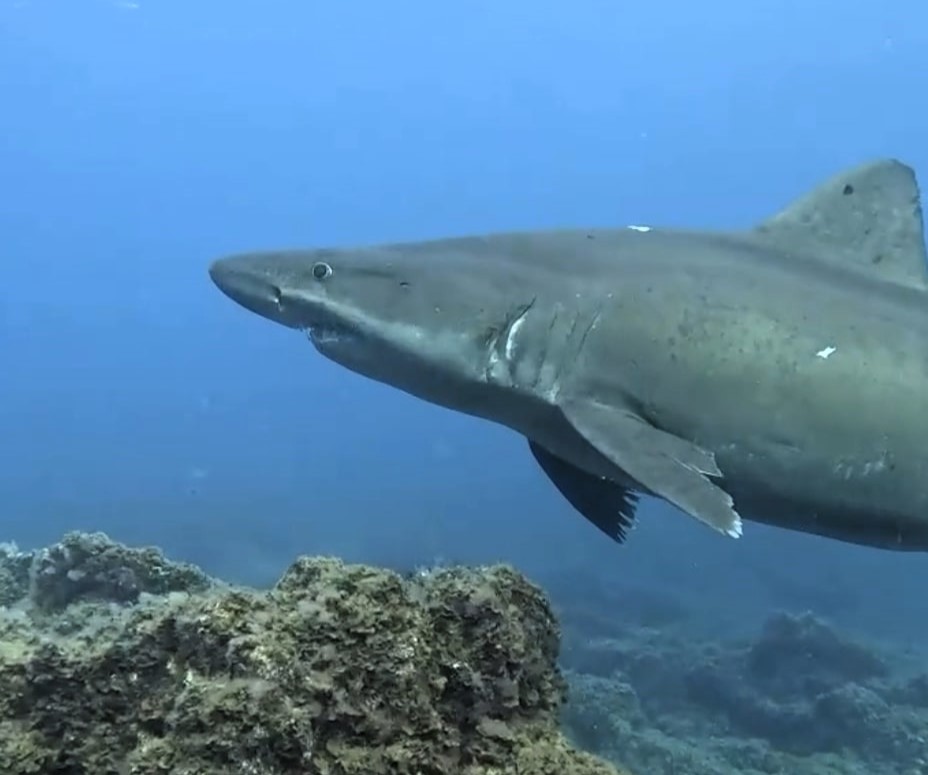A rare shark usually found in deep waters has been spotted off a popular Brit holiday destination for the first time in years.
The smalltooth sand tiger – an endangered species – normally lives between 400 and 800 metres below the surface.
But one individual was recently seen at just eight metres deep off the Tacorón area of El Hierro.
READ MORE: Strange ‘Dumbo’ octopus spotted by boffins two miles deep
- Advertisement -
The island along with Tenerife, Fuerteventura, Gran Canaria, Lanzarote, plus La Palma, La Gomera make up the Canary Isles.
It is estimated about 6.3million Brits go there every year.
The sighting was made by members of the island’s El Bajón Diving Centre, , as reported by What’s The Jam.
A spokesperson said: “As many of you know, we’re lucky enough to get visits from a truly unique shark species that only appears in our waters occasionally.
“We hadn’t seen any since 2019, until now.”
- Advertisement -
“These sharks usually live between 400 and 800 metres deep, but in recent weeks, several diving centres have reported sightings. It was an open secret… and today we finally got to see them up close!
“These are pregnant females, who at this time of year come to this area for a short stay. It’s an amazing natural wonder, and one we should always enjoy with respect, care, and safety.”
Joseba Landaeta of the diving centre added: “At this time of year, pregnant females come to this particular spot, apparently to spend the season in shallower, calmer waters, away from the males.
- Advertisement -
“It’s a natural wonder we can enjoy responsibly. Despite their size and appearance, they’re completely harmless and very gentle creatures.”
The diving centre revealed that videos and photos will need to be compared to determine whether this shark is the same individual last seen off the island six years ago.
Joana commented: “Big news, I’m so happy. Now I hope they’re respected and protected by laws that prevent them from being disturbed.”

The smalltooth sand tiger is classified as “endangered” by the International Union for Conservation of Nature, meaning it is very likely to become extinct in its known range in the near future.
It can grow to at least 5.2 m (17 ft) in length and is usually found in tropical and warm temperate waters, though it has occasionally been spotted as far afield as British and Irish waters.
Despite its fearsome appearance, the species is docile and has never been known to behave aggressively towards humans.
Its population is threatened by habitat degradation, overfishing, pollution, and human disturbance.
READ MORE: Wildcats threatened with extinction in Britain given new hope after birth of kittens


















